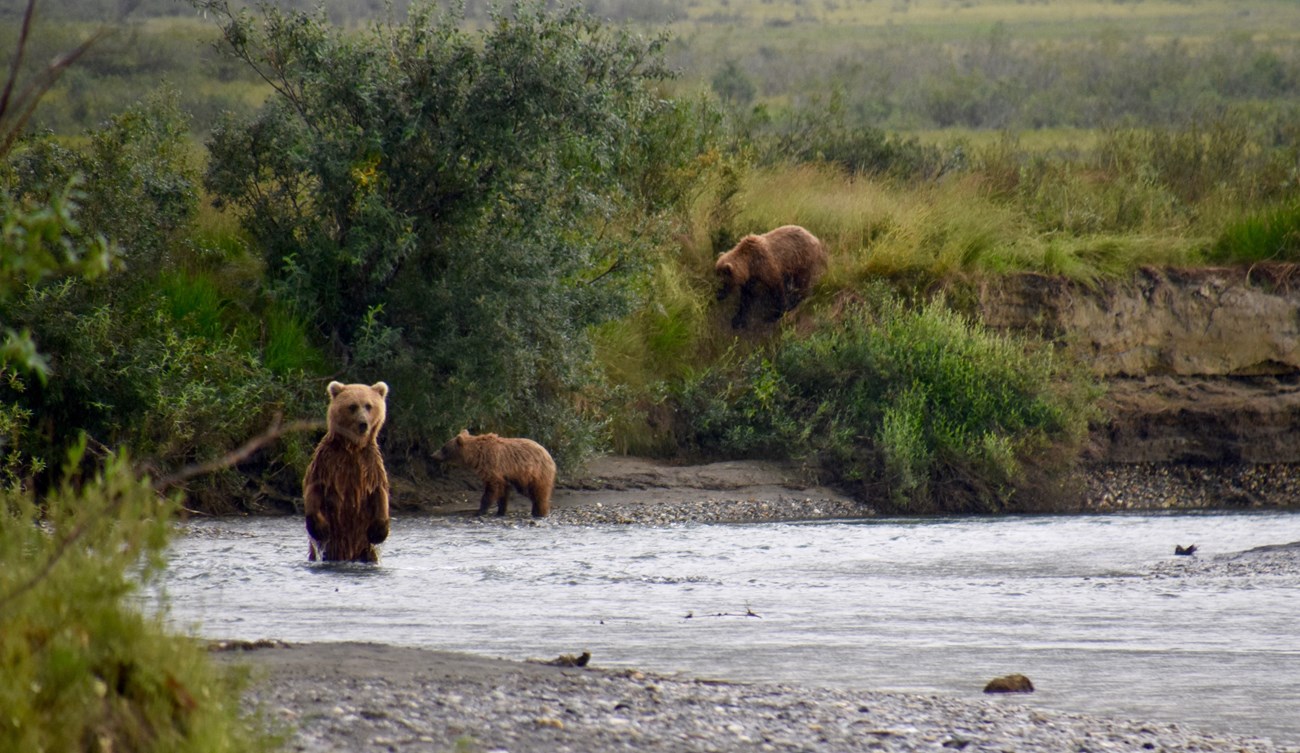
NPS/Matt Cameron Brown bears live throughout Gates of the Arctic. However, there are higher populations along most of the Park's major streams and rivers. Because their food is so spread out, there is an average of one brown bear for each 100 square miles. Brown bears spend much of the summer adding layers of fat to their body by eating anything they can find, including roots, berries, fish, small mammals, and if they are lucky, the calves of moose and caribou. The winter is spent sleeping in their dens while their body burns the fat they stored in the summer. This is not considered true hibernation because they occasionally wake up and move around in the den. During this time, the bear's heart rate slows, they don't eat or use the bathroom, and female bears give birth without fully waking up. Brown bears range though all habitat types in the Park, but they are most commonly found in open alpine or tundra habitats. They have been viewed as an "umbrella species" that confers protection to other co-occurring species with smaller habitat requirements. They require large areas free from human threats. Human activities pose a threat to the long-term viability of brown bear populations worldwide because of habitat loss, fragmentation, and human-caused mortality. Managing for a healthy ecosystem and healthy brown bear populations is important because hunting is an important traditional aspect of life in Alaska. Brown bears are harvested by subsistence hunter throughout the park and preserve and sport hunters in the Itkillik and Kobuk Preserves. Aerial direct-count surveys are conducted to estimate population abundance and the probability of occupancy (presence/absence) in an area. These surveys provide estimates of bear abundance, density, and trends in bear distribution, all of which are necessary to understand an manage the effects of human activities that directly affect brown bear survival in the Park. Brown bears is a "Vital Sign" of the Arctic Network Inventory and Monitoring Program (ARCN). Information gathered from long term research and monitoring will be used to:
Connecting Further
Additional Resources
|
Last updated: December 2, 2020
